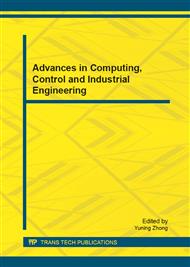p.176
p.181
p.186
p.192
p.198
p.204
p.210
p.216
p.221
A Simplified Method of Simulation for Aircraft Performance Parameters in Air Traffic Control
Abstract:
In order to simplify the traditional methods for simulating aircraft performance in ATC, a method is proposed in this paper by the flight aerodynamics theories, normal and maximal climb rate in steady climb motion and acceleration/deceleration of Straight-and-Level Flight of performance computation. This method can be used to simulate acceleration, deceleration, and climb/descent rate of usual civil aircraft types. It is convenient and useable compared with the traditional complex methods which need input many parameters manually in air traffic control (ATC) simulation. The experimental result listed in this paper coincides with the basic flying rules of aircraft types such as 737-300, A310-300, B747F, Y-7. The application of this method in the real ATC simulator for controller training proved its function and effect.
Info:
Periodical:
Pages:
198-203
Citation:
Online since:
November 2012
Authors:
Price:
Сopyright:
© 2012 Trans Tech Publications Ltd. All Rights Reserved
Share:
Citation:


